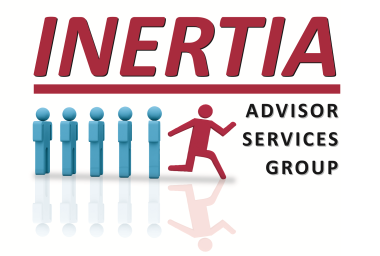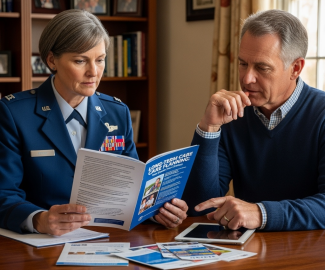Effective Long-Term Care Planning Strategies for Veterans
For the 5.5 million American veterans and their spouses, integrating Long-Term Care (LTC) Planning into a broader financial strategy may be more critical than ever. Why? Because too many are under the false impression that their time in service guarantees a lifetime of comprehensive care through the VA. Yes, veterans' benefits can be valuable, especially when properly integrated into a complete plan. But they come with limitations, misconceptions, and bureaucratic hurdles that make them wildly unreliable as a standalone LTC solution. Let’s break down what these benefits actually are and what they’re not.
Understanding the Basics: ADLs and the Aid & Attendance Pension
Before diving into Aid & Attendance (A&A), let’s get clear on the functional trigger used across the LTC planning world: Activities of Daily Living (ADLs). The six basic ADLs most people perform without assistance are Continence, Bathing, Dressing, Eating, Toileting, and Transferring (e.g., moving from bed to chair). When an individual is unable to perform at least two of the six ADLs, or develops a cognitive impairment, they meet the functional threshold used by most long-term care insurance contracts, and—importantly—also become eligible for Aid & Attendance benefits under the VA pension program.
What is Aid & Attendance?
VA Aid & Attendance is a pension enhancement available to qualifying veterans or their surviving spouses who meet income, asset, and medical need criteria. The benefit is designed to help offset the cost of care for those who require assistance with ADLs or supervision due to cognitive issues. The 2024 Maximum Monthly Tax-Free A&A Benefits are as follows:
Beneficiary Monthly A&A Benefit Tax-Equivalent (20% bracket)
Married Veteran $2,727 ≈ $3,400/month
Single Veteran $2,229 ≈ $2,786/month
Surviving Veteran Spouse $1,478 ≈ $1,847/month
That’s up to $32,724 per year, tax-free, for a married veteran—but only if they meet strict income and asset requirements. Is it a valuable benefit? Yes. But is it a reliable foundation for a complete Long-Term Care (LTC) strategy? No. So, in that context, there are five critical reasons Veterans' Benefits alone should not be considered a standalone LTC Plan. Each one reflects real-world planning challenges veterans and their families face when they assume the VA will “handle it.”
Means Testing: A&A is Income and Asset Dependent: In 2024, the net worth cap for A&A eligibility is $155,356, and that includes most assets (excluding primary residence and one vehicle). Monthly income—minus unreimbursed care expenses—is also considered. Veterans with even moderate wealth may find themselves ineligible without significant planning or asset restructuring, often years in advance. For the vast majority of clients, this is where the A&A benefit discussion ends.
Limited Access to VA LTC Facilities: Veterans may assume they have a room waiting at a VA facility when the time comes, but supply doesn’t meet demand. There are geographic gaps, long waitlists, and eligibility tiers that prioritize certain vets over others. State Veterans Homes often offer more flexible admission criteria, but are state-run, vary in quality, and can have stricter financial limits.
Service-Connected Priority Groups: Eligibility for full LTC coverage through the VA is largely dependent on a veteran’s service-connected disability rating. Generally, only those with a 70% or higher rating are eligible for comprehensive VA-paid nursing home care. The rest? They may only receive limited subsidized care—or be denied altogether.
Surviving Spouses Receive Less: Here’s a heartbreaking truth: when the veteran passes away, the surviving spouse’s monthly A&A benefit drops by nearly 50%—even though their care needs may not. That’s a massive funding gap at precisely the wrong time, when grief and long-term care collide.
Coverage Gaps & Care Setting Limitations: VA benefits rarely cover private-pay assisted living, memory care, or in-home services outside of a narrow set of contracts and programs. That means families either pay out of pocket or adjust expectations—and care quality—downward.
HALO – A&A ≠ Fully Funded Care
LTC Planning should always be cost-based, not assumption-based. That’s why using a tool like the HALO™ Care Cost Assessment is essential—it helps project actual care needs and financial exposure. Aid & Attendance should be treated like any other potential income source: it supplements a structured plan, but it doesn’t replace it.
Yes, veterans earned these benefits—but they’re not guaranteed. The VA’s Long-Term Care system is complicated, inconsistent, and often inaccessible without advance eligibility planning. That’s why your job—regardless of your role with a veteran or surviving spouse—isn’t just to mention A&A or hope the VA delivers. Your job is to stress test assumptions, protect independence, and document how care will be funded—regardless of what the government provides. Because like almost everything else, the government doesn’t do Long-Term Care well—so stop pretending it does.
Veterans’ benefits are PART of a Long-Term Care Plan—but they can never be THE plan.

